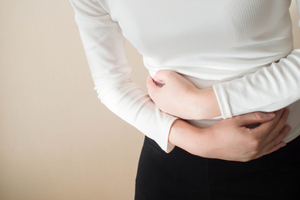
Bruises, also known as contusions, form when small blood vessels near the surface of your skin break and leak out red blood cells. The resulting appearance shows through the skin as a reddish-purple or “black and blue” bruise. You begin to heal as the body metabolizes the blood cells, causing the bruise to fade through a series of colors ranging to include greens, yellows and brown before completely disappearing.
Bruising is usually nothing to worry about as a bruise can be brought on by so many different things. It’s common to notice a bruise and not even remember how it got there. But, if you are constantly experiencing frequent, severe and/or unexplainable bruising there may be an underlying cause.
Here Are 9 Reasons You May Be Bruising More Than Normal
1. Blood Disorders
Bruises are created by a reaction of blood vessels in the body. Therefore, it only makes sense that certain blood disorders could greatly increase your risk for bruising. Common blood disorders associated with excessive bruising include leukemia and hemophilia. A simple blood test could determine if a blood disorder is an underlying cause.
2. Diabetes
People with diabetes are at at a greater risk for skin discolorations that look like bruising. Diabetes doesn’t always have a lot of symptoms, so you may not even know you have it. If you are diabetic, all it takes is frequent skin on skin contact to leave dark marks on the surface of your skin. These marks may appear similarly to bruises, but they are actually insulin resistance surfacing through the skin.
3. Age
Seniors bruise much easier than younger generations. As we age, our skin naturally losses its fatty layer of protection that provides a cushion against bumps and falls. Making matters worse, as the production of collagen slows the skin becomes thinner. As a result of these natural ageing impacts, you’re left with far less protection than you had in your younger years and it’s much easier to bruise.
4. Purpuric Dermatosis
Purpuric Dermatosis is a vascular condition most common in elderly people, but can impact you at any age. A sign of this condition includes thousands of tiny bruises dotting the skin at one time. These tiny bruises are caused by blood leaking out of small capillaries.
Interesting fact: One study found that people with this condition were able to reduce or completely clear up skin defects by taking 50 mg of Rutin 2x a day along with vitamin C supplement.
5. Overdoing It At The Gym
If you are putting too much strain on your muscles at the gym you could see bruising as a result. Heavy weight lifting is known to cause bursting blood vessels and bruising. When you work out tiny tears form in your muscles, which can contribute to bruising. Vigorous exercise also puts you at a greater risk for getting bumped or experiencing minor traumas that create bruises.
6. Side Effect Of Certain Medications
Certain medications will make you more susceptible to bruising. Medications with bruising as a listed side effect include aspirin, anti-platelet agents, anticoagulant medications and other medications that interfere with blood flow. Aspirin, birth control, prednisolone, and other medications are known to weaken blood vessels and increase the likelihood of bruising.
7. Fair Skin
If you have pale skin bruises are going to be more noticeable. That doesn’t mean you are more likely to bruise than someone with darker skin, it just means mild bruises are better able to show through your skin.
8. Sun Damage
Sun damaged skin loses a lot of its natural pliable and resilient qualities. As a result, it makes it easier to develop bruises.
9. Insufficient Diet
What you eat can also impact your likelihood to develop bruises. Consuming the right nutrients strengthens capillaries so that they tear less easily.
Make sure you get plenty of bioflavonoids in your diet to help combat bruising and keep capillaries strong. Bioflavonoids can be found in dark-colored berries, dark vegetables and onions. A diet rich in organic fruits and vegetables and limited processed foods will help decrease your risk for bruising.
If you continue to bruise easily even under a healthy diet plan you can take additional nutrients to help. These nutrients include Rutin, Hesperidin and Vitamin C.
Rutin is categorized as a bioflavonoid that actively works to strengthen blood vessels. It is often prescribed as a natural remedy for hemorrhoids and varicose veins, as well as bruising.
Hesperidin is another bioflavonoid that can be found in citrus peels and is proven to strengthen capillaries.
Vitamin C has been found to decrease bruising as well. Vitamin C is often recommended alongside bioflavonoids such as Rutin and Hesperidin.
Concerned that you are bruising too much? Contact Urgent Medical Center today for compassionate on-the-spot treatment from medical professionals who care.




